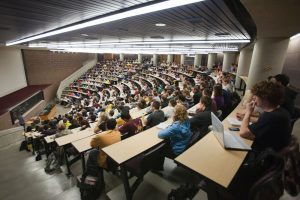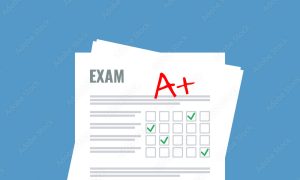GCSE
GCSE Art & Design: Success with Component 2 – The Externally Set Assignment
Course Code:
T0201
£229.00+vat
ABOUT THIS COURSE
Based on feedback from teachers, this new course holds emphasis on the exam component. If your students spend too much time deliberating how to respond to the exam papers then this is the course for you. Workshop based activities will provide a comprehensive range of ‘ready to go tasks’ enabling students of all abilities to begin and develop their starting points with rigour, speed and scope. Advice on avoiding pitfalls, getting students productive straight away, maximising a clear sequence of practical learning evidence during the preparatory period. How to use annotation in a quick, simple and insightful way, hitting across all four assessment objectives and making student art work ‘better’! What can be undertaken prior to and during the supervised time will be dealt with. How students should select, organise and present work ready for assessment This course is suitable for teachers following all exam boards and all titles. You must bring an A5 or bigger sketchbook and drawing materials to work with on the day.BENEFITS OF ATTENDING
- Strategies to get all students underway with their exam board set starting points
- Time saving approaches you can use which fit into the preparatory period
- ‘Off the shelf’ workshops to apply the following day in your classroom
- Focus on teaching strategies which will ‘turn on’ and motivate less confident learners
- Activities which allow students to collaborate and work together
- Help you help your students to select the ‘best’ and make it better
- Hit exam board requirements for Component 2: The externally Set Assignment
- Avoid national pitfalls which cost students time, marks and grades
PROGRAMME
Successful ‘Responses’. The characteristics of successful student artwork
10.00am What is and is not required of Component 2: The Externally Set Assignment. We will identify key characteristics found in successful artwork submissions. Explicitly flag the national pitfalls. Set out a clear time line and milestones for a key sequence of operations within the preparatory period. Advice on stages with intervention strategies and how to build your students’ own ‘Toolkit’ for success. Advice on how prep work should be organised and presented. Tackle what can take place prior to the supervised 10 hours.Getting students started
10.30am We will ‘put you in the shoes of your students’. This exercise tackles the ability of students to get started from the exam paper and to stick with an idea without jumping from one unrelated idea to the next. This approach allows the teacher to manage how students get started and develop their work while ensuring the student builds confidence in making choices about their ideas. A01 Workshop – Gut reactions, second thoughts & third time lucky! Great for getting all students starting with speed and momentum.Break
11.15 amUsing ‘the correct’ annotation quickly to drive their practical work
11.30pm Students can fear annotation or labour with it using it as an excuse not to start producing practical work! This session empowers the student by giving them specific vocabulary they can use to ‘unlock’ ideas for their practical work. It removes the ‘fear’, helps those students with limited vocabulary of their own, puts both you and them in control of how it connects with the practical work. This is a crucial strategy for hitting across all four assessment objectives and can be employed at various stages throughout the preparatory period. Workshop – Walking into an image!Lunch
12.30 – 1.30pmCreative risk taking through drawing for the correct role and purpose
1.30pm Responding to starting points efficiently is key for a successful student at the beginning the Externally Set Assignment. But this might not be looking at the work of others, it could be a practical investigation with launches from an object, location or previous experience. Students can waste time predicting what their ‘final piece’ might be before they start any work! This strategy not only exploits drawing in different ways but allows students the experience and confidence to work open ended and speculatively. Workshop – Working in 2D & 3D imaginatively!Break
2.30pmCollaboration, working together with momentum & extended thinking!
2.45pm Here, we ensure students’ work is independent, personal and avoids ‘spoon feeding’, which of course cannot happen in this component! We will explore how students can work together in groups. It has also been tried as an observed OFSTED lesson by different teachers who have all received ‘Outstanding’! It has been a magnificent way for an art student to work quickly from the Externally Set Assignment paper set in January each year. Workshop – Visual ‘Chinese Whispers’ & ‘Compare & contrast’!Depart
3.45pmThis course, tailored to suit, can be delivered in your school. Discuss this further with our CPD team on 01625 532974 or click below to make an enquiry.
COURSE LEADER
Mark Coombe is an experienced Art & Design teacher of 25 years who has taught all areas of Art & Design. He is renowned as a CPD leader, trainer and presenter across all disciplines of Art & Design. He is a practising artist, in particular in animal portraiture – livestock & rare breeds – and his current portfolio is supplying The National Trust in Norfolk, Suffolk and other regions.
WHO SHOULD ATTEND
- Teachers with little or no experience of delivering this component
- All teachers of GCSE Art & Design – Fine Art, Graphics, Textiles, 3D & Photography
- Heads of department
THIS COURSE INCLUDES
- A specially prepared folder of 50+ pages full of detailed notes, practical advice and guidance
- Notes prepared by the educational experts leading the course
- Expert produced PowerPoint presentations
- CPD Certificate of attendance
Description
ABOUT THIS COURSE
Based on feedback from teachers, this new course holds emphasis on the exam component. If your students spend too much time deliberating how to respond to the exam papers then this is the course for you. Workshop based activities will provide a comprehensive range of ‘ready to go tasks’ enabling students of all abilities to begin and develop their starting points with rigour, speed and scope.
Advice on avoiding pitfalls, getting students productive straight away, maximising a clear sequence of practical learning evidence during the preparatory period. How to use annotation in a quick, simple and insightful way, hitting across all four assessment objectives and making student art work ‘better’! What can be undertaken prior to and during the supervised time will be dealt with. How students should select, organise and present work ready for assessment This course is suitable for teachers following all exam boards and all titles.
You must bring an A5 or bigger sketchbook and drawing materials to work with on the day.
BENEFITS OF ATTENDING
- Strategies to get all students underway with their exam board set starting points
- Time saving approaches you can use which fit into the preparatory period
- ‘Off the shelf’ workshops to apply the following day in your classroom
- Focus on teaching strategies which will ‘turn on’ and motivate less confident learners
- Activities which allow students to collaborate and work together
- Help you help your students to select the ‘best’ and make it better
- Hit exam board requirements for Component 2: The externally Set Assignment
- Avoid national pitfalls which cost students time, marks and grades
You must bring an A5 or bigger sketchbook and drawing materials to work with on the day.
PROGRAMME
Successful ‘Responses’. The characteristics of successful student artwork
10.00am
What is and is not required of Component 2: The Externally Set Assignment. We will identify key characteristics found in successful artwork submissions. Explicitly flag the national pitfalls. Set out a clear time line and milestones for a key sequence of operations within the preparatory period. Advice on stages with intervention strategies and how to build your students’ own ‘Toolkit’ for success. Advice on how prep work should be organised and presented. Tackle what can take place prior to the supervised 10 hours.
Getting students started
10.30am
We will ‘put you in the shoes of your students’. This exercise tackles the ability of students to get started from the exam paper and to stick with an idea without jumping from one unrelated idea to the next. This approach allows the teacher to manage how students get started and develop their work while ensuring the student builds confidence in making choices about their ideas. A01 Workshop – Gut reactions, second thoughts & third time lucky! Great for getting all students starting with speed and momentum.
Break
11.15 am
Using ‘the correct’ annotation quickly to drive their practical work
11.30pm
Students can fear annotation or labour with it using it as an excuse not to start producing practical work! This session empowers the student by giving them specific vocabulary they can use to ‘unlock’ ideas for their practical work. It removes the ‘fear’, helps those students with limited vocabulary of their own, puts both you and them in control of how it connects with the practical work. This is a crucial strategy for hitting across all four assessment objectives and can be employed at various stages throughout the preparatory period. Workshop – Walking into an image!
Lunch
12.30 – 1.30pm
Creative risk taking through drawing for the correct role and purpose
1.30pm
Responding to starting points efficiently is key for a successful student at the beginning the Externally Set Assignment. But this might not be looking at the work of others, it could be a practical investigation with launches from an object, location or previous experience. Students can waste time predicting what their ‘final piece’ might be before they start any work! This strategy not only exploits drawing in different ways but allows students the experience and confidence to work open ended and speculatively. Workshop – Working in 2D & 3D imaginatively!
Break
2.30pm
Collaboration, working together with momentum & extended thinking!
2.45pm
Here, we ensure students’ work is independent, personal and avoids ‘spoon feeding’, which of course cannot happen in this component! We will explore how students can work together in groups. It has also been tried as an observed OFSTED lesson by different teachers who have all received ‘Outstanding’! It has been a magnificent way for an art student to work quickly from the Externally Set Assignment paper set in January each year. Workshop – Visual ‘Chinese Whispers’ & ‘Compare & contrast’!
Depart
3.45pm
Additional information
| Location and Date | Online | Wednesday 10 July 2024 |
|---|





